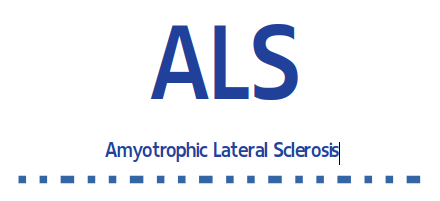Maja Ramljak, Ottawa ON – Every year, approximately 1000 Canadians die from amyotrophic lateral sclerosis, also known as ALS, Lou Gehrig’s disease, or motor neuron disease. ALS is a fatal neurodegenerative disease characterised by the progressive degeneration of upper and lower motor neurons. Individuals suffering from ALS will experience gradual paralysis of the body as the brain loses the ability to communicate with the muscles of the body. Over time, an individual with ALS will lose the ability to walk, talk, eat, swallow, and eventually breathe. Current interventions show only mild slowing of disease progression.
Researchers speculate that interventions key to slowing or halting ALS progression will require therapies that target the primary motor cortex directly. However, accessing such an area with biotherapeutics remains challenging because of the blood-brain-barrier (BBB) – a highly selective, semipermeable border that separates circulating blood and extracellular fluid in the CNS.
As of September 2019, researchers have conducted the first in-human trial of BBB opening in individuals diagnosed with ALS. The trial was completed with the hopes of establishing the groundwork of a future technique that will couple BBB-opening with targeted drug delivery to the primary motor cortex as a novel treatment of the disease. MRgFUS (magnetic resonance-guided focused ultrasound) is an emerging technology that can accurately and transiently permeabilize the BBB. Specifically, MRgFUS can permeabilize the barrier in such a way that would allow the temporary passage of a compound (like a drug) past the barrier and into the central nervous system. MRgFUS also uses real-time MRI feedback for target guidance and tissue monitoring – allowing for millimetric accuracy.
Dr. Agessandro Abrahao and colleagues from the University of Toronto demonstrated that non-invasive, BBB permeabilization over the motor cortex using MRgFUS is safe, feasible, and reversible in ALS participants. Future research may couple the technique with biotherapeutics to provide a targeted means of treatment delivery for patients with ALS. Recent pilot clinical trials used this non-invasive MRgFUS BBB opening in small regions around gliomas and along areas of the frontal lobe of patients with Alzheimer’s disease. However, this study was the first of its kind in individuals with ALS.
Four subjects diagnosed with ALS and presenting with clinical evidence of upper motor neuron dysfunction were enrolled in the study. A motor cortex region corresponding to a severely weakened contralateral limb was chosen. MRgFUS sonications targeted the right motor homunculus region corresponding to the weakened hand or leg in attempts to open a maximum BBB volume of 1cm3. Activation fMRI of a hand or foot task (hand squeezes or foot taps) was used prior to the sonication to determine target accuracy. Success of BBB opening was examined via gadolinium leakage at the target site. MR contrast agents (CAs) contain gadolinium and are used in associated with MRI in routine clinical practice to detect and subsequently quantify BBB leakage. Normally, CAs do not cross the intact BBB but if the barrier integrity is compromised (e.g., by an opening somewhere in the BBB), CAs will leak from the blood into the brain tissue.
To assess outcome, participants completed clinical assessment, laboratory testing, and neuroimaging immediately after BBB opening and then at day 1, 7, 30, and day 60. No change in the neurological status was detected during the sonications in any of the participants – the 24 hour inpatient observation period was uneventful. Importantly, longitudinal neurological assessments revealed no accelerated disease progression as measured by clinical assessment for the limb contralateral to the sonicated cortex. There were no clinically significant longitudinal changes in cognition or spasticity. In other words, the BBB was successfully opened and then closed with no disease progression or other side effects. In the future, this method of BBB opening in the motor cortex may be used to deliver pharmacotherapeutic compounds to the brains of patients with ALS.
To read more about this article, click here.
Related Reference:
Ku, Waiczies, Niendorf, Pohlmann, 2018. “Assessment of blood brain barrier leakage with gadolinium-enhanced MRI”. https://link.springer.com/protocol/10.1007%2F978-1-4939-7531-0_23
